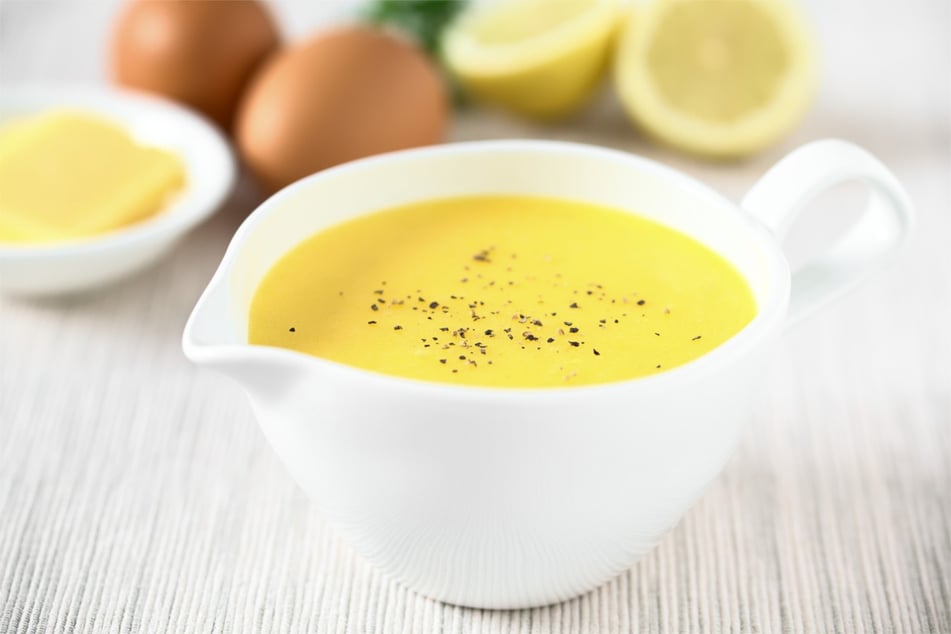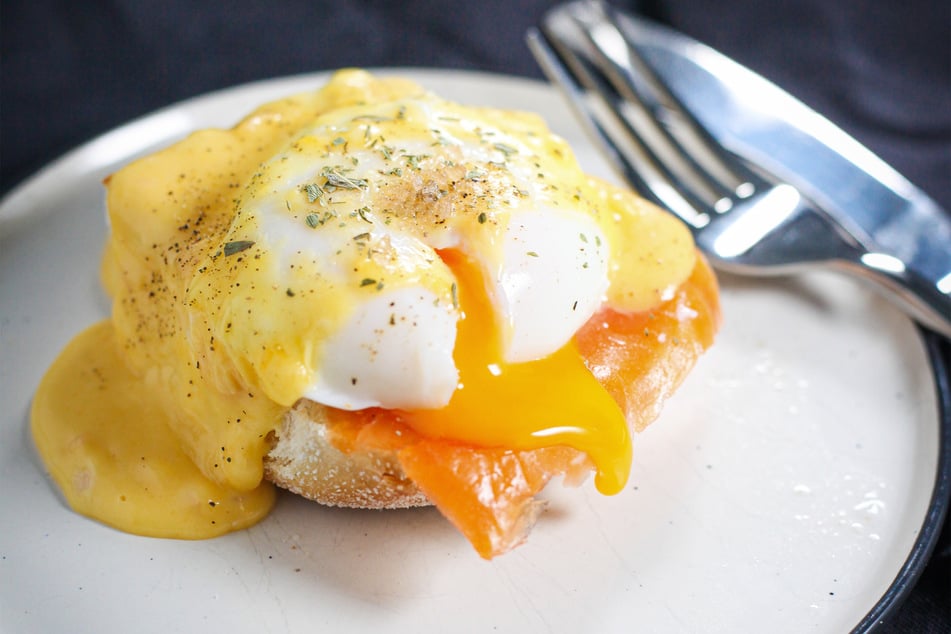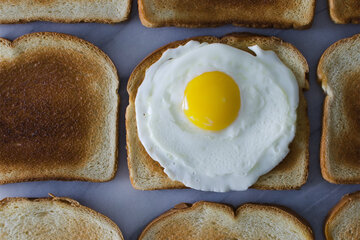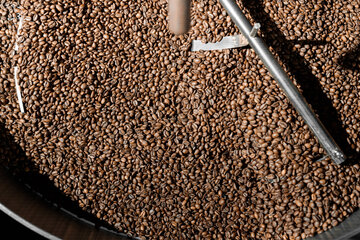Hollandaise sauce recipe: How to make easy and perfect Hollandaise sauce
With butter, eggs, and a squeeze of lemon, the humble Hollandaise sauce is both simple and complex, delicious and basic. How do you make a perfect Hollandaise sauce, though, is it really as hard as they say?

Hollandaise can be intimidating to make.
It requires cooking techniques that are a lot more advanced than many people care to believe. Still, this gorgeous French sauce is the perfect breakfast treat, not too expensive at all, and something that everyone should learn how to make.
Don't worry – it might be tricky, but we'll be there every step of the way!
If you're a fan of French food, or breakfast in general, then Hollandaise sauce should certainly be in your repertoire. With this easy Hollandaise sauce recipe you'll be avoiding the blender and making it the right way. Let's tuck in!
How to make the best Hollandaise sauce: Recipe
Hollandaise sauce is one of those things that new home cooks struggle to get right. It's a delicate emulsion formed with a very careful application of heat and consistent movement in the mixture. You don't want to apply heat directly, and you don't want to create a false emulsion using a blender, so we're going to apply the double boiler method today.
Here's what you're going to need if you want to make Hollandaise sauce:
- A large, wide, and deep pot
- A stainless steel bowl that will sit on the top of the pot
- A cutting board
- A knife
- A whisk
- A smaller pot
- A jug
- A spoon
The way we're going to make Hollandaise sauce will require you to first clarify your butter, make a sabayon, then combine them together to form the final product.

Best Hollandaise sauce recipe | Ingredients
So this is the easy bit, collecting your ingredients. What is important to note is that you don't need anything fancy to make a Hollandaise sauce. It might seem like a fancy French thing, but it's actually incredible simple in terms of the ingredients themselves. The most important thing, though, is making sure that everything is fresh – and mastering the technique, of course.
Here are the ingredients you'll need to make Hollandaise sauce:
- Butter, 9 ounces
- 3 egg yolks
- 1/2 lemon
- Apple cider vinegar, 1 tablespoon
- Salt
Here's the thing: You don't need pepper, you don't need tarragon (that would be a béarnaise), you don't need anything other than the basics here. Keep it simple, folks!
On the proportions: It's best to start small and simple, without large quantities. This will easily coat and feed two people, though. Once you have mastered the technique and feel like you can start making it for more people, feel free to adjust the quantities proportionally.
Best Hollandaise sauce recipe | Instructions
We're going to break this all down for you step-by-step, so that it is as simple and easy to follow as possible. The most important thing is heat control and technique. There are a variety of skills you'll need to pull this off, especially since we are clarifying our own butter.
Here's how to make a quick, easy, and delicious Hollandaise sauce!
Step 1: The first thing you're going to do is clarify your butter. Yes, this might sound scary, but it's actually easy. Start by putting your butter into the smaller pot and turning the heat on your stove to medium.
Step 2: Once the butter has melted, you will see that the milk solids are separating – kind of like when you separate curds and whey when making cheese. Use your spoon to carefully scoop those solids off the top and deposit them in the sink or in a cup.
Step 3: Continue this process, scooping away and removing all the milk solids while waiting until the butter is a golden and clear color. Once you have finished, take it off the heat and let it cook and remain still (so that any leftover milk solids will sink to the bottom).
Step 4: Once your clarified butter is at about room temperature, decant it in the jug (or something that makes it easy to pour out the butter). Now, it's time to start with your sabayon.
Step 5: Put water into a pot so that it sits about 1–2 inches below the bottom of your bowl when you pop the bowl on top. Bring it up to a simmer on your stove, keeping the head relatively low.
Step 6: Place your bowl on top of the pot so that the steam is heating up the base. Put your three egg yolks inside along with the apple cider vinegar.
Step 7: Start whisking vigorously, making sure never to stop or let the mixture stick to the sides of the bowl. Once it has more-or-less doubled in size, take it off the heat to allow the steam to escape and continue whisking.
Step 8: With the sauce totally off the heat, while constantly whisking, start to very slowly pour in your clarified butter. Do it little by little, adding a touch more butter once everything has been combined until all of it has been used up.
Step 9: If you notice that your sauce is thickening up too much, add a splash of water here and there to loosen it a bit, all while continuing to whisk. In the case that your sauce gets too thick or loose it will split and be ruined.
Step 10: Once everything is combined and emulsified, and the mixture has a custard-like consistency, you're almost done!
Step 11: Add a pinch of salt (to taste) and squeeze a lemon into the mixture, whisking again to combine.
Step 12: Until you serve it up, pop the bowl over the top of the steamy water (which has been removed from the heat and is no longer boiling) to keep it warm. Whisk it occasionally to make sure it doesn't split. That's it! Enjoy!
The trick to cooking a good Hollandaise is controlling the temperature while managing the emulsion process. It's a subtle and often quite difficult art, and something that will require a lot of practice.
Keep ice on-hand: In much the same way that ice can save a gluggy bechamel sauce, it can also save a Hollandaise. If your Hollandaise has curdled, add a small block of ice into the mixture and whisk like crazy. It works a charm!
How to make easy blender Hollandaise sauce
You can make a decent Hollandaise in a blender, but it won't have the consistency or flavor that you want. Sure, it's butter and egg so it'll taste fine, but once you've mastered the techniques required for Hollandaise, you will look at the blender variety as being rather pointless. It will take around 1–2 minutes to put together, though, so it's a good option in a pinch.
To make your Hollandaise in a blender, use the same ingredients. Simply blend the eggs, lemon juice, apple cider vinegar, and salt together. Heat your butter so that it is fully melted (if you're using a blender, why bother clarifying it?) and then turn the blender on low and continuous while slowly pouring the butter in.
What is Hollandaise sauce?

Hollandaise sauce is a French sauce often paired with eggs that is made from an emulsion of eggs and butter. Typically seasoned with salt and lemon, it has been around since the 1600s and is one of the world's most famous and most beloved sauces. Its name means "Dutch sauce", despite it being from France.
It's well established that the most important thing when making a Hollandaise sauce is the control of temperature. Traditionally, this is done via the use of a double boiler (which we have done in this recipe). Many consider it a very hard sauce to master as it has a habit of curdling if that temperature control is not perfected.
There are a number of derivative Hollandaise sauces in the world. Bearnaise is probably the most common, and generally uses tarragon to add an extra layer of complexity to the sauce's buttery flavor.
Hollandaise sauce origin
Hollandaise sauce is a French sauce, not a Dutch sauce, despite the implication of its name. It is theorized that the French Huguenots brought the sauce back to France after their exile in Holland. Others believe that it was given Hollands name as it was popularized via the use of lower-quality butter and, as a result, the French did not want to be associated to its name.
Hollandaise sauce is perfect with eggs - AKA eggs Benedict!
If you have never tried an eggs Benedict before, now that you've mastered Hollandaise sauce, it's time to take the dive. This is a simple one – toast two English muffins so that they're nice and crispy, fry up some ham and put it on top (bacon and smoked salmon can also be awesome), poach an egg, cover it all in Hollandaise. It's the perfect breakfast!
Hollandaise is also incredible when paired with asparagus, various different kinds of fish, with some ribs, in a breakfast sandwich, or on some nice hot chips. It's absolutely divine, it's easy to make once you've learned how to use a double boiler, and it'll never fail to warm your soul.
Cover photo: 123RF/bondd




